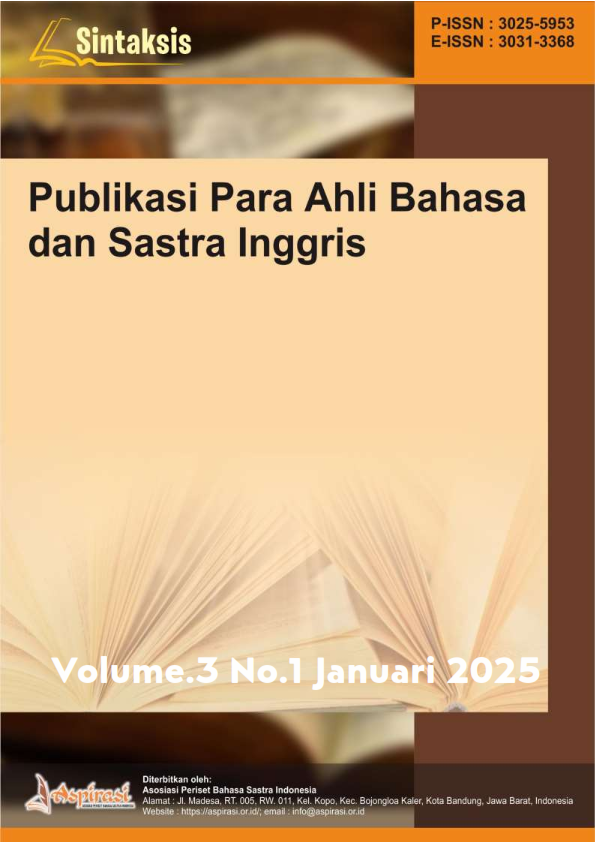Pragmatics in Everyday Life: Understanding Unspoken Rules of Interaction
DOI:
https://doi.org/10.61132/sintaksis.v3i1.1359Keywords:
Pragmatics, SpeechActs, Implicature, PolitenessAbstract
Pragmatics, a fundamental branch of linguistics, focuses on the implicit rules that govern human interaction. It delves into how meaning is constructed, conveyed, and interpreted in everyday communication beyond literal language. This study explores the mechanisms of pragmatics in daily life, particularly how context, shared knowledge, and social conventions influence interactions. Key areas examined include speech acts, implicature, and politeness strategies, which highlight the dynamic nature of meaning-making in various social contexts. Speech acts, such as requests, apologies, and promises, illustrate how utterances perform actions beyond their lexical content. Implicature examines how individuals infer meaning that is not explicitly stated, relying on context and shared assumptions. Politeness strategies, which vary across cultures, play a crucial role in managing interpersonal relationships and ensuring smooth communication by balancing social expectations and individual intentions. Understanding these unspoken rules is essential for effective communication, as they often dictate the success of social interactions. Misinterpretations in pragmatics can lead to misunderstandings, social faux pas, or conflicts, emphasizing the importance of cultural and contextual awareness. Pragmatic competence is crucial in multilingual and multicultural settings, where differing conventions and norms can create unique challenges. By synthesizing theoretical insights from existing literature, this study highlights the pervasive influence of pragmatics in shaping human interaction. It underscores the necessity of pragmatic awareness in fostering interpersonal understanding, enhancing communication skills, and navigating the complexities of social life effectively.
Downloads
References
Dey, M. (2023). The primary characteristics of English pragmatics in applied linguistics: Exploring the key features of English pragmatics in applied linguistics. Inverge Journal of Social Sciences, 2(2), 1–13.
Dey, M. D. (2023). Four main characteristics of English pragmatics. LLT Journal: A Journal on Language and Language Teaching, 26(2), 510–519.
Levinson, S. C. (2024). The dark matter of pragmatics: Known unknowns. Cambridge University Press.
Mey, J. L. (2021). Mobile (im)politeness: The view from pragmatics. In The philosophy of (im)politeness (pp. 15–31).
Nuridinova, S. (2023, December). The essence of conversation and its pragmatic features. In Conference Proceedings: Fostering Your Research Spirit (pp. 186–189).
Xabibullayevna, I. U. (2024). Developing pragmatic competence in language teaching. Pedagogical Cluster-Journal of Pedagogical Developments, 2(6), 57–63.
Downloads
Published
How to Cite
Issue
Section
License
Copyright (c) 2025 Sintaksis : Publikasi Para ahli Bahasa dan Sastra Inggris

This work is licensed under a Creative Commons Attribution-ShareAlike 4.0 International License.





